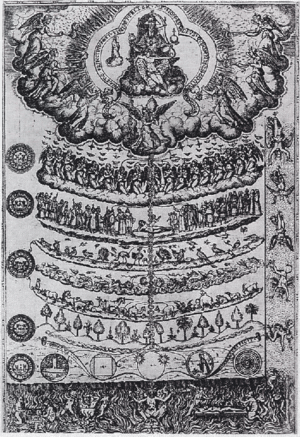
Jackson postulates that the unconscious and our connections to the animal world make statements about the truth of the human condition, and attempts to juxtapose evolutionary theories and science with horror films. It's a satisfyingly disquieting exhibit.

Christopher Atkins wrote an interesting description of the exhibit for visitors tying it into the old medieval diagrams, the scala naturae. These showed hierarchies rather than intertwined, overlapping and dynamic networks of relationships between nature.
The idea is, however outmoded, that if you ascend the ladder, there are superior states of being and privilege. Atkins cites Simon Critchley's notes on humor that "There is something charming about an animal becoming human [but] when the human becomes animal, then the effect is disgusting."
As can be expected, this is also a conversation about the Other, about what becomes a monster, and how the cabinets of curiosities and zoos allowed researchers and the public to look at creatures outside of their natural environments under controlled circumstances, although this approach also meant that a lot of assumptions get made- that somehow, if you take them out of their normal contexts, that they will behave the same.

Overall, I might have liked to have seen more pieces included, and in some cases I found the execution effective enough, but they failed to provoke much lingering curiosity within me.
No comments:
Post a Comment